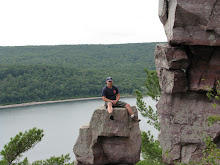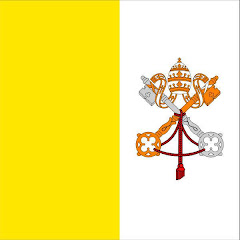This program is from RealCatholicTV.com
The tomb of St. Peter
And totally missing the point..............................from a (Catholic) Parish in Rochester...WARNING..New Age theology to follow......................no, I will not name it.
Our Worship Space
The worship area, rich in light and space, is intended to continue the sense of
informality,
[right cause why would Christs sacrifice on Calvary need to be treated as a formal, solemn event...] the musical participation and the interactive spirit that have characterized our Sunday Masses from the beginning. It also provides us with a sense of the Holy Spirit in our midst.
The sanctuary for our worship space is in the center, with the assembly gathered around the altar, so
everyone can be close to one another. [and hug, dance, and cuddle if needed] The baptistery is at the front edge of the sanctuary to keep before us the continuing importance of Baptism in our lives. We read the Scriptures from the ambo. This place is prominent because of the importance of the Bible for our lives and spirituality. .
The building is intended to maintain an atmosphere where children can feel welcome and comfortable in our midst. There is no cry room; and, generally, infants can remain in the worship area. It does not bother us if small children wander or play on the floor in our assembly. Children’s bulletins and color crayons are available for the children at Mass times.
Holy Spirit Processional Cross
A Cross of Victory - This cross was under design for almost four years.
[Really, that is kinda sad.] This cross is very different from what you might see in other places.
[Thank God for that]
A little history first of all: the cross of the early church did not feature a corpus on it. It was not a crucifix. Instead, the cross of that time was a cross of victory, a jeweled cross. It was a cross of resurrection and triumph, symbolizing that we won the victory over sin and death, and that the battle is over, adorned with the signs of celebration.
In fact, some may remember growing up, during Holy Week they would cover all the statues in church, and most of all, cover the crucifix.
[Still do in parishes that actually...well...you get the picture] The reason for doing this was that the cross was jeweled, and you wouldn't display the cross of the resurrection during the Lenten liturgical season. As the centuries wore on, however, the practice of the church became preoccupied with the crucified Jesus
[?....we proclaim Christ and him CRUCIFIED] , and began to cover the cross during Holy Week in order to unveil
[seriously need some training on what it means to veil something...and why its done.] the crucified Jesus on Good Friday, rather than to cover the Easter cross of the resurrection.
Thus the processional cross at Holy Spirit is an attempt to
reach back to the tradition of the early church
[throwing the BS flag on that statement, I think tradition is the last thing intended here] , and is thus comparable to the jeweled cross of the resurrection, with its bronzed, enameled surface sparkling above the community.
Incidentally, if we look carefully through our cross, we can see the body of Jesus. As we look through the cross to the other side of the community
(Note: seating arrangement at Holy Spirit is "in the round"), we can see those seated on the other side of church.
Thus, the corpus of the cross is really us. We are the body of Christ. That's what our theology tells us over and over. Whenever we come together, we are the corpus, the body of Christ.
[I can't go on..........leave me...I can't make it......]
The Cross of Holy Spirit
When the artist first sketched this cross some four years ago, we asked him why he started with this design. He said that this is a cross of the Holy Spirit. We asked, "How so"? He said that the twelve pieces joined together in this cross represent the twelve apostles, or rather the eleven and Mary, on whom the Spirit descended on Pentecost. Thus, the artist intends this cross as a portrayal of that event of Pentecost, as well as to suggest that we are that gathering now, and that the Spirit is present in our midst as well.
Also, if we look carefully, the twelve pieces that make up this cross roughly resemble houses joined together. If we look closely, it looks like the neighborhoods around our parish church, joined together as we are, to form the body of Christ. We as a parish are made up of households, fit together in the shape of a cross.
Also, if we look closely at the houses, some are pointed inward, and some outward. That tells us something else about our community: that part of what we do is focused inward on our own spiritual development, and part is focused outward as service into our civic community. As a result there is a bi-directional piece of theology to all of this, connecting us to our city and county as well as to each other in the parish.
The Openness of the Cross
The next piece to reflect on is the openness of the cross. Basically, the cross is the passageway. When Jesus died on the cross, he opened the passageway for us. Thus, the passageway is through the cross.
This, then, is the narrow door that the Gospel is talking about. If we understand the cross being the passageway, it means we have been forgiven, and the way is open to God for us. In this way the cross is the passageway that everyone searches for.
It is also worth noting, that if the passageway is opened in one direction for us to reach God, the passageway is also open in the other, for the Spirit to enter into our lives. The passageway is two-way. Thus, the Holy Spirit also comes to us through the cross, entering our lives, showering us with gifts and talents for us to use.
This cross, then, is to be seen as the way, the door that is opened to us, because Jesus died for us. We have forgiveness of sins, because that passageway is open. We are priests, prophets and royalty because that doorway is open. We have gifts inside ourselves that we find because that passageway is open.
Lastly, if we look at the twelve pieces of the cross, that we said were like our houses joined together, we can see that the passageway opens through each of the houses. This is indeed a reminder to each household that the Holy spirit comes not just at church, but also, and maybe primarily through, the family gathered together. Our homes are temples of the Spirit, and each person of the family finds the passageway to the kingdom through the support and faith of the family together.
An Unfinished Space
Our worship space remains unfinished, requiring us to wait with more permanent liturgical art and furnishings. Plans for a finished assembly area are underway.

























.jpg)




